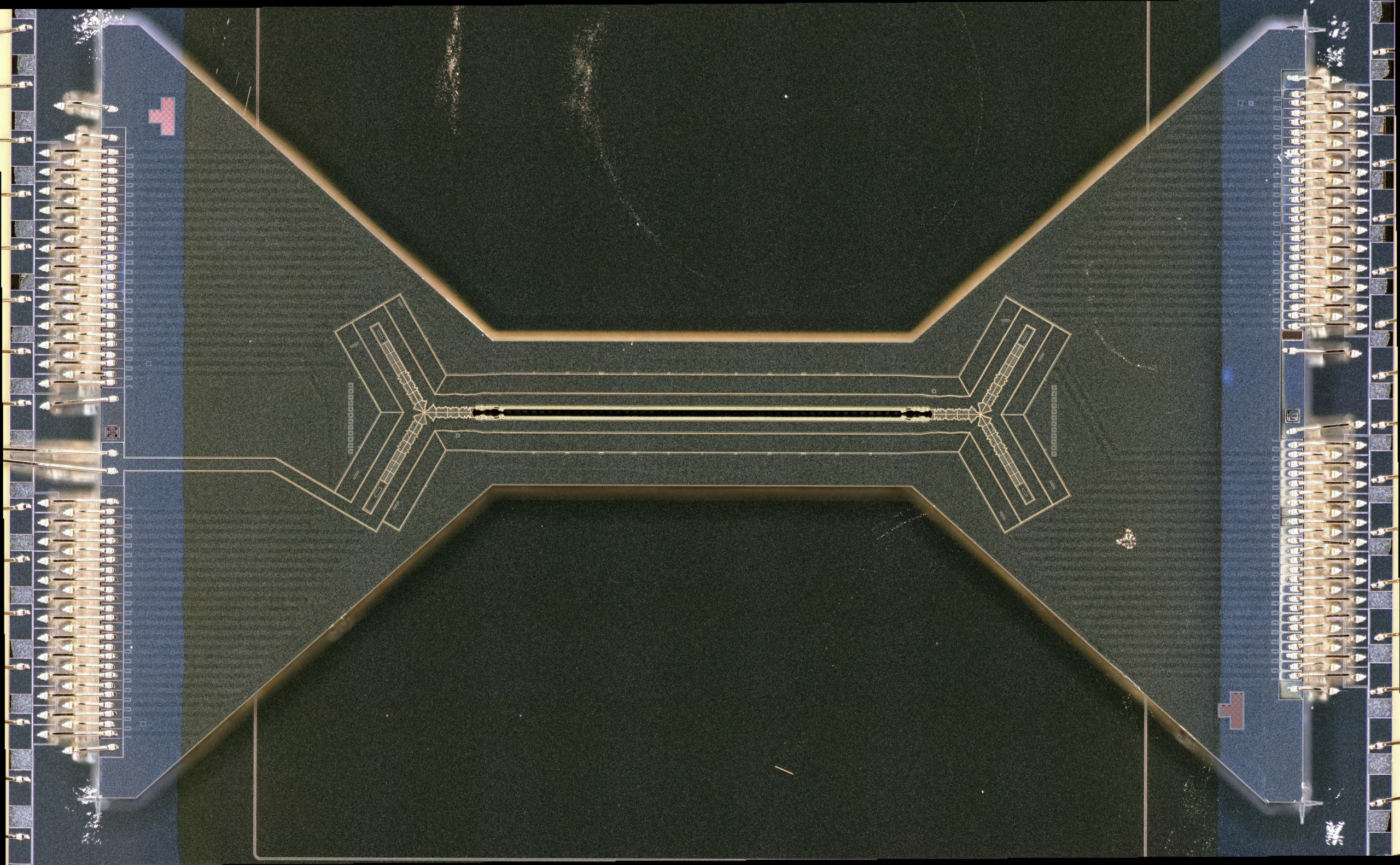When Sandia National Laboratories’ Susan Clark was at Stanford University earning applied physics graduate degrees, she switched fields to pursue the next big thing: quantum computing. But her initial research into solid-state techniques to produce the qubits that make this new technology so powerful left her frustrated.
She was studying quantum circuits based on gallium arsenide, a common semiconductor, but “those data were always really hard to interpret,” she recalls. Meanwhile, papers discussing another quantum method talked about “ion traps and how clean all their data looked. It looked like it was supposed to, as quantum mechanics dictates.” That led her to a three-year University of Maryland postdoc researching ion traps.
Now ion traps are the foundation for a quantum computing testbed at Sandia’s New Mexico campus. Clark is leading a five-year project that makes this technology available to scientists from universities, private companies and other national labs, with support from the Department of Energy’s Advanced Scientific Computing Research program to examine the shortcomings and possibilities of quantum computing.
Clark says its machine – called QSCOUT, for quantum scientific computing open user testbed – is “rare in an increasingly growing field” in its use of trapped ions to exploit the weird realm of quantum mechanics and to “study quantum computing and quantum phenomena and whatever quantum things they want.”
Lasers manipulate QSCOUT’s ytterbium ions to generate qubits, the computational units of quantum computing. Among other benefits, trapped ytterbium ions don’t need the expensive cryogenic cooling most other quantum technologies rely on, Clark says. The interact at about room temperature inside a vacuum chamber as the interplay between direct current and radiofrequency fields detain them on a chip.
More crucially, this mode seems to foment less operational noise than competing methods, addressing a major shortcoming in these early days of quantum devices.
Theoretically, any computational qubit offers far more possibilities than the bits of everyday classical computing, experts say. Bits are the calculating units in classical computing, made by billions of microscopic transistors like those in our laptops in the familiar 1-or-0 scheme – a 1 bit created when a transistor switches on, a 0 is when it remains unactuated.
Qubits, however, are generated by the behavior of quantum particles, such as photons, electrons and ions, and can exist in different places simultaneously and act as both waves and matter. As a result, behind the scenes in a quantum state, qubits can multiply themselves as 1s, 0s or complex mixtures of both in the same calculation, Clark says.
‘One of the things our users are most interested in is studying the machine itself.’
QSCOUT makes qubits when its operators activate a laser at the precise frequency and pulse rate to flip the spin states of mutually vibrating trapped ions. Whereas classical computers have hordes of bits to work with, QSCOUT makes do with only three qubits at a time, with plans to grow up to 32 – plenty for a testbed evaluating an experimental new technology. “We’re really excited to have this chance to build quantum hardware and then work with other scientists to use it,” Clark says.
They’ll have a machine with desirable qualities. Ytterbium is “less sensitive to magnetic field noise in general,” Clark says. “And then we’ve done our best to shield it from other noise sources.”
Competing technologies require that qubit-generating particles remain embedded inside their own solid-state material and are thus over-sensitive to their surroundings; QSCOUT’s trapped ions are kept “pretty far,” atomically speaking, she says – isolated in a vacuum 70 microns (millionths of a meter) from their trap’s surface and 4.5 microns from one another.
Another plus: Ytterbium atoms can be trapped in electric fields just by heating a chunk of the element and letting it convert directly to a vapor. Lasers can then strip away some electrons in a two-step process, transfiguring atoms into positively charged ions.
As a bonus, lasers Clark’s team uses to trap ions emit light in an experiment-friendly range of wavelengths, using equipment that is accessible and relatively inexpensive.
“Definitely one of the things our users are most interested in is studying the machine itself,” Clark says. “They can compare the results they got on other testbeds with those from our trapped ion system.”
The Sandia’s testbed’s flexibility is another novel feature. A review committee selects users, she says, and “if you have an idea of doing something that will make the whole system perform better you can do that.”
QSCOUT uses Jaqal, one of the quantum assembly languages that serve as bridges between the classical and quantum worlds. For instance, Jaqal initiates the series of laser pulses in QSCOUT that arrange qubit-creating sequences called gates. To help users, Sandia has stockpiled Jaqal translations of other quantum-assembly languages for other testbeds.
The testbed’s team of about 26, working full- or part-time on the project from across Sandia’s sprawling campus, trapped its first ion the fall before the pandemic and has since been testing, integrating and improving the system.
The rollout has encountered a few pandemic-related delays. “We’ve had things set up so we can run remotely,” Clark explains, “but occasionally things break. So we’ve had a skeleton crew on-site to fix what is broken as needed.”
Initial QSCOUT users include Indiana University, Oak Ridge National Laboratory, University of California at Berkeley, University of New Mexico and IBM, itself also a quantum computer maker.

